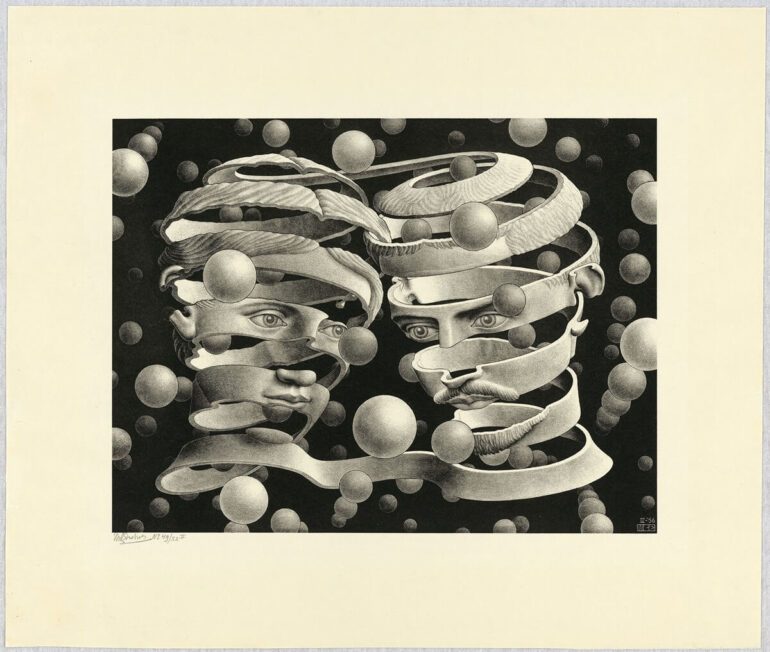The exhibition showcases 300 works by the Dutch artist who depicted the impossible.
Palazzo Bonaparte commemorates the centenary of Maurits Cornelis Escher‘s first visit to the capital with a grand exhibition featuring over 300 works that showcase the vastness and complexity of his universe – a realm where reality and imagination coexist seamlessly, rendering him one of the most beloved artists by the public.
Lithographs, woodcuts, mezzotints, etchings – these incredible works, all meticulously handcrafted without technological aids, encapsulate the talents of a graphic artist, mathematician, designer, and optical illusion expert within a single artist.
The exhibition journey is divided into 8 sections: The Beginnings, Italy, Tessellations, Metamorphoses, Spatial Structures, Geometric Paradoxes, Commissioned Works, and Eschermania. Of particular interest is the second section, dedicated to the 13 years the artist spent in Italy, from 1923 to 1935. Escher held a special place in his heart for this period, particularly cherishing his time in Rome, as depicted in the series of 12 woodcuts created in 1934, titled Roman Night.
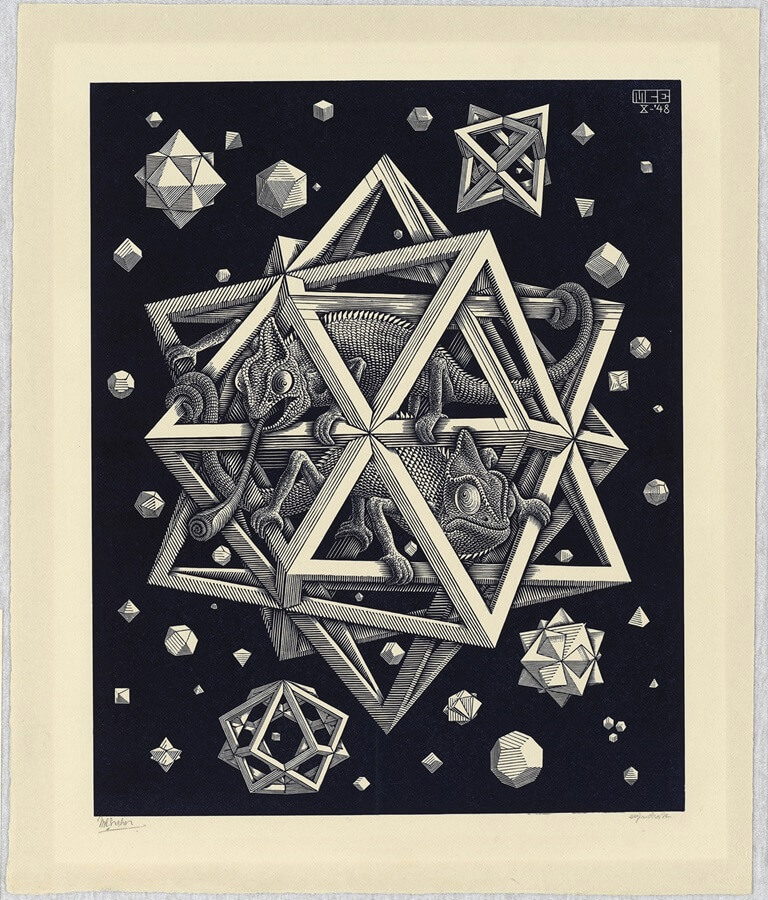
In the evening from 8 a.m. to 11 or 12 at night, I sketched in Rome, in this amazing, beautiful, night-time Rome, whose architecture I love so much more than I do during the day.
Maurits Cornelis Escher
In Rome, Escher attended art history classes taught by Adolfo Venturi at La Sapienza University and even had the opportunity to exhibit some of his works during a personal exhibition organized in the city. Escher maintained a studio at Via Poerio 122, a space perfectly recreated in his famous artwork, Hand with Reflecting Sphere, one of his most renowned creations.
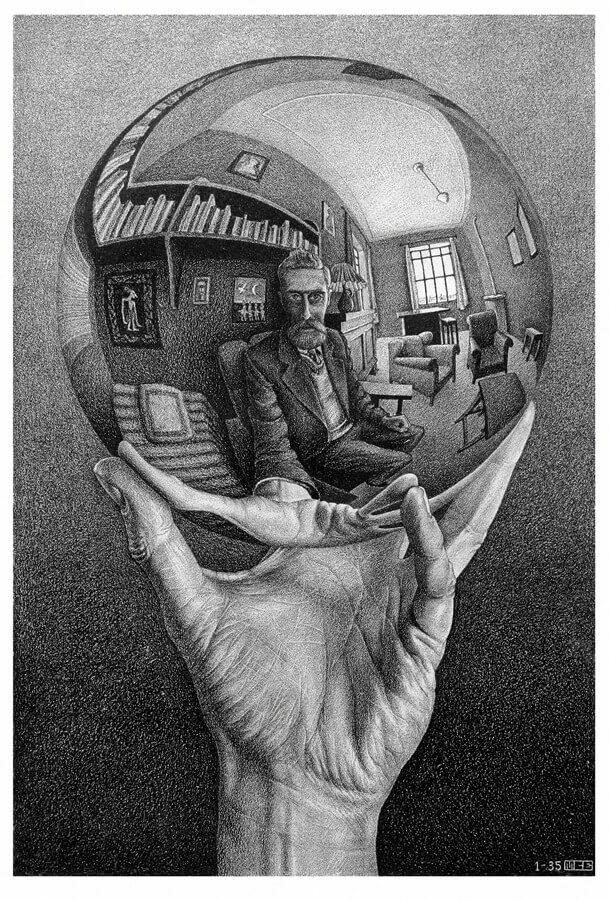
The exhibition also features a reconstruction of the artist’s studio in Baarn, the Netherlands. Original tools used by Escher during his work are on display, including the portable easel he carried with him during his travels in Italy.
Escher’s fascination with geometry was sparked during his visit to the Alhambra in Granada, Spain. The intricate decorations he observed at this site drove him to explore tessellations, which involve dividing surfaces into multiple repeating geometric figures, seamlessly interconnected without leaving empty spaces.
This approach later became the foundation of Escher’s famous metamorphoses: beings or objects transform into something entirely different through a sequence of different tessellations. This process gives birth to swirling kaleidoscopes of images with no clear beginning or end, where contrasting elements interact, creating cohesion between what is typically separate.
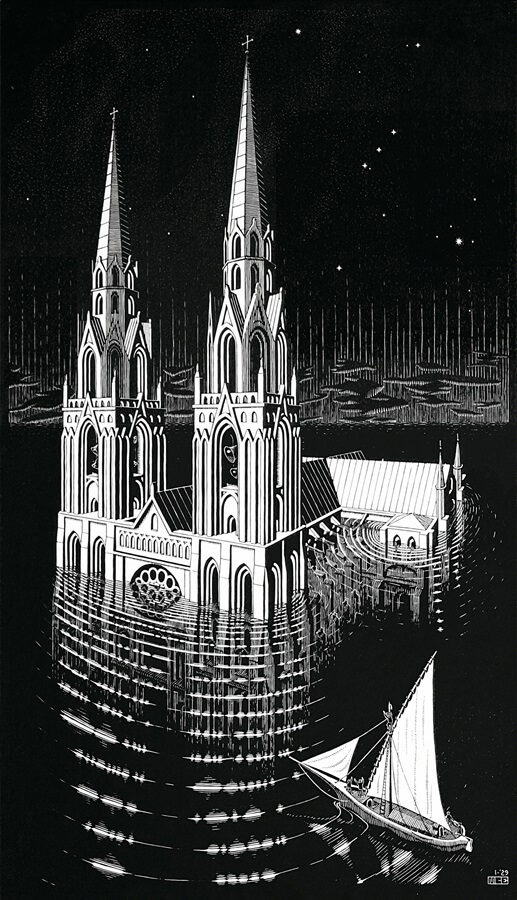
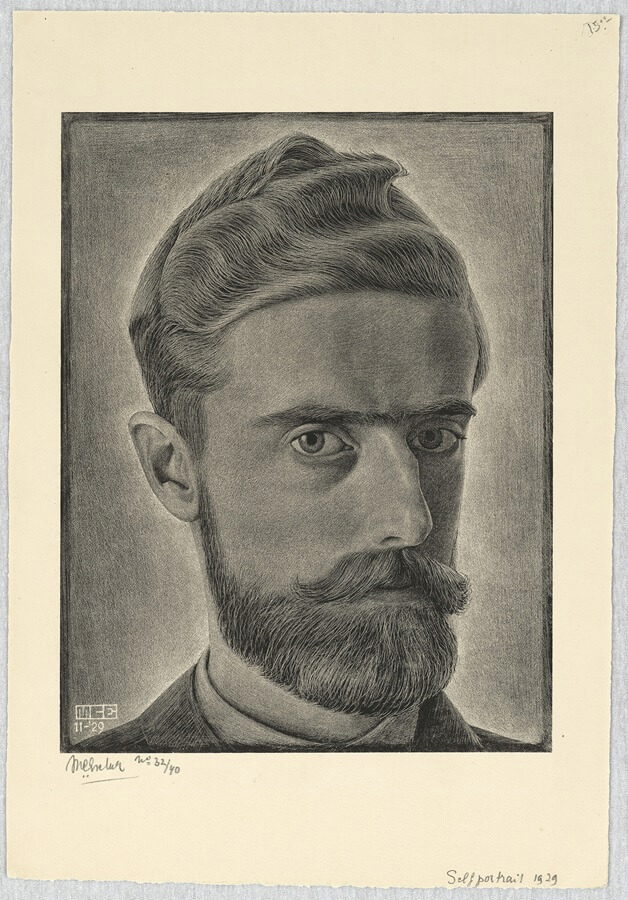
The allure of Escher’s work lies in his ability to conceive the compositional space in a non-traditional manner. Euclidean norms yield to worlds of reflective surfaces, convex lenses, and intricate spacetime configurations that nearly hypnotize the viewer, blurring the sense of reality. Escher’s art opens up new possible solutions, challenges what we have traditionally considered “normal,” and invites us to reconsider the ordinary. Escher’s perspective distortions and architectures of the impossible become a representation of an infinite realm of possibilities, perhaps yet unexplored but certainly imaginable by those who have the vision to see beyond.
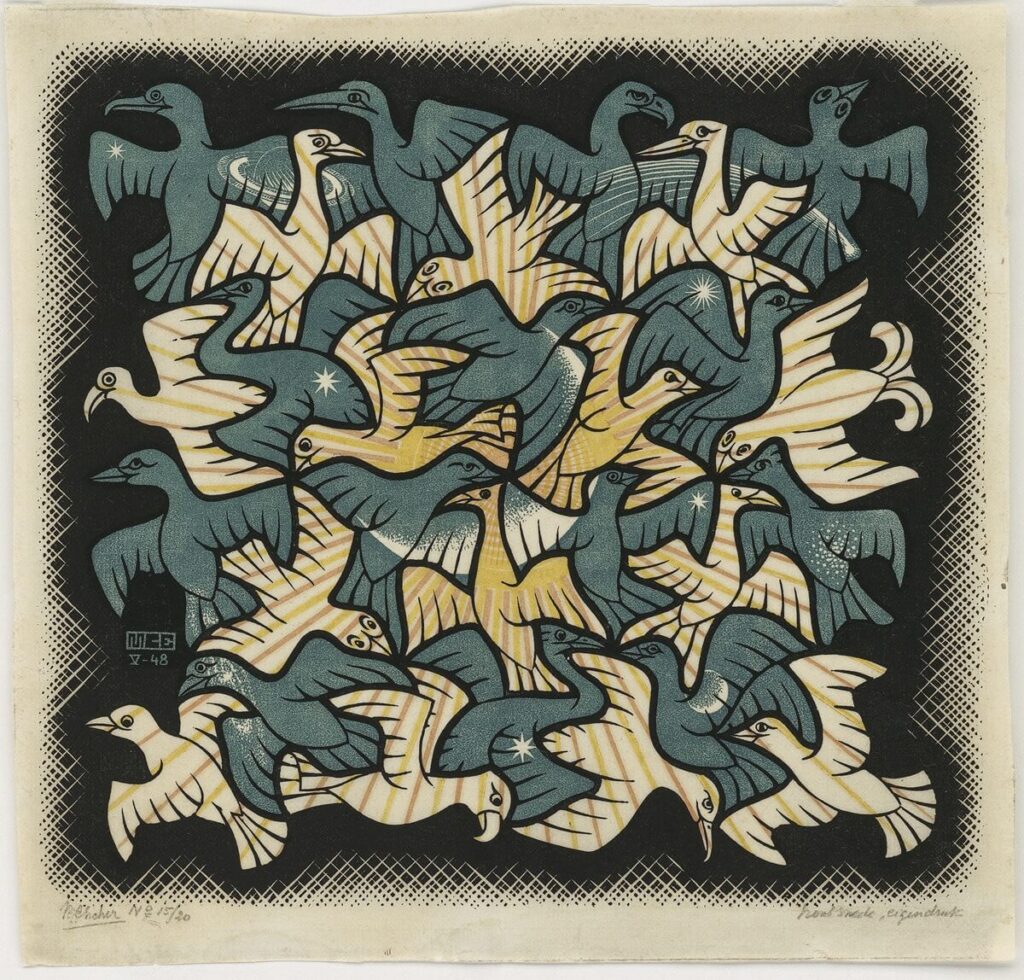
Until 5 May 2024
Palazzo Bonaparte
Piazza Venezia, 5
Hours: Mon – Thu 9am – 7:30pm | Fri – Sun 9am – 9pm
Tickets: Full 17,50€, Reduced from 9,50€ to 16,50€ (audioguide included)


